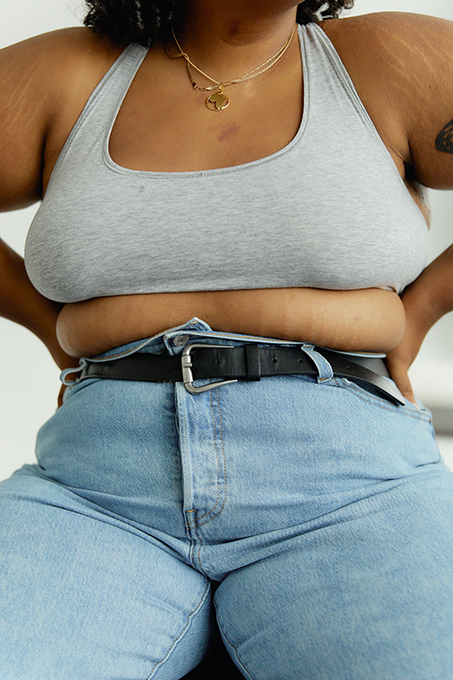
Why am I gaining weight despite breaking up with junk food and mithai?
The good news is, it might be water retention
Clean eating has been your mantra. You’ve managed to crack through that weight loss plateau and meeting your calorie deficit requirements without damaging your metabolic system. You’re regularly working out, mixing cardio exercises with weights. But for some reason, you still feel bloated and puffy. The number on the scale may has even gone up, and it can be incredibly frustrating when you’re doing everything right. But what feels like fat gain could actually be water weight or more appropriately, water retention.
We learnt in school that water is our life force and makes up 60% of our bodies. We’re basically sentient cucumbers with opposable thumbs. But it’s also possible that our body is holding onto too much water. And it’s this accumulation of fluid that experts term water retention, or oedema (edema) as it is medically known, in the interstitial compartment or ’tissue space’ that surrounds tissue cells. There are instances where oedema is a sign of serious medical concern, indicating disorder of our kidneys, liver and thyroid.

“You may notice your hands, feet and wrists getting slightly swollen. Your face may feel and look puffy, you may have a bloated stomach and notice a sudden, unexplainable weight gain (after ruling out any side effects of medication),” says Dr Angad Chauhan, explaining the signs of water retention.
He adds that for women, it’s common for your body to hold onto water to occur before and during menstruation, during pregnancy, menopause and in some cases, as a result of oral contraceptive pills, in which case you should consult your gynaecologist to try a different combination of birth control.
It’s a cause of concern when water retention is accompanied by other symptoms like coughing, shortness of breath, fatigue, tightness of the skin on the affected area which dimples when you press down on it. “This is called pitted oedema and requires professional attention. You should see a doctor if you feel these symptoms persisting for longer than five-six days or increasing in intensity,” adds Chauhan.
For most people, water retention is a temporary condition that can be remedied with a few lifestyle changes and dietary modifications once you identify what’s causing your body to hold onto water.
What causes water retention?
High levels of salt and sugar in your diet
You know how your mouth feels extra dry, parched and puckered when you eat too many salted peanuts? The primary component in common table salt is sodium chloride. Nutritionist Shraddhaa Karkare explains it simply, saying, “Too much sodium chloride makes you thirsty inside-out. Your body holds onto that water to dilute the excess salt.”
A high level of insulin adds another layer to the mess caused by sodium retention, by increasing its reabsorption into the kidneys, which in turn leads to more water retention.
Sedentary lifestyle
Do you ever feel puffy after a long flight? It’s the sitting in place for long stretches that causes fluid to build up.
A sedentary life means low or minimal activity. When our body moves, the muscles pump around the fluids inside us. Inactivity can slow this process down and be a contributing factor to water retention, according to fitness trainer Venu K Raman.
Moderate daily exercise and activity keep our blood pumping, fat burning, muscles and organs healthy. “People who are overweight may also struggle with water retention. Increased body fat puts pressure on your veins and our organs become sluggish,” adds Raman.

Low water intake
We’re back at the water. Now you may be thinking, if there’s already too much fluid in my system, why do I need more water?
That one glass of water in the morning and another at lunch is not enough. When we’re dehydrated, alarm bells go off in our system and in a panic, it starts storing water.
“It depends on your body composition, but you need to have a minimum of 2-2.5 litres of water in the day,” says Karkare. And by ‘in the day’ she means all through the day. Gulping down lots of water in a short period of time could do more harm than good. It causes a sudden disruption of the body’s electrolytes balance, overly diluting the sodium in our body – an essential compound.
Prolonged periods of stress
For some people when their cortisol levels are high, the body also releases aldosterone which is a hormone in charge of balancing sodium and potassium in our system. Higher aldosterone makes our body expel more potassium while holding on to more sodium, throwing off the balance of minerals.
Vasopressin, also called antidiuretic hormone (ADH), is responsible for how much water our kidneys reabsorb. Prolonged periods of high stress can increase ADH, which is the signal master directing our kidneys about how much water to hold and pump back.
How to keep the water flowing
Dietary modifications
Reducing the amount of salt and sugar we ingest and increasing our water intake is the first place to start. Following that Karkare advises adding potassium-rich foods to our diet. You can get fancy with berries and raisins, or keep it simple with bananas, spinach and sweet potatoes.
A good daily intake of protein is needed to keep water retention at bay. Protein holds on to salt and water, not allowing it to seep into our surrounding tissue. Vegetarians and vegans should stock up on pulses, nuts and whole cereals. The best source for non-vegetarians is eggs and chicken.
Karkare also advises keeping an eye on your vitamin B6 levels since some studies have linked a deficiency with mild water retention. Add walnuts, potatoes, chickpeas, fish and green leafy vegetables to your plates.
You could also try natural diuretics, as opposed to OTC pills, that will help flush out fluids, like herbal tea, barley (jau) tea, cucumber, ginger and garlic.
Increasing activity and adding exercise to your daily routine
Getting hot and sweaty during a workout doesn’t just do good for the muscles and body, it keeps the fluid pumping in our body and floods our body with happy hormones. If you’re new to the workout game, you can start slow with simple exercises you can sustain over a long period of time.
Daily cardio exercise keeps your heart healthy and circulation going. You can sweat out excess fluid and salt, and send oxygen flowing to every organ. “You can start with a daily brisk walk for at least 20 minutes to keep water retention in check and your heart and lungs healthy,” says Raman. If you’re cautious with your outdoor activities and movements in these tumultuous times, then put on your walking shoes and try an at-home ‘walk-out’ video that’ll get you moving.
Yoga is another great option to deal with water retention. Especially the cobra pose. “The posture can alleviate the discomfort you’re feeling because of water retention by improving blood circulation and digestion,” adds Raman.
More seasoned practitioners can try the shoulder stand pose to encourage the water to drain from your lower extremities. “The movement of yoga postures encourages the drainage of fluid in our body. It’s important to go slow and stick to a level of difficulty that you’re comfortable with to avoid injury.”




